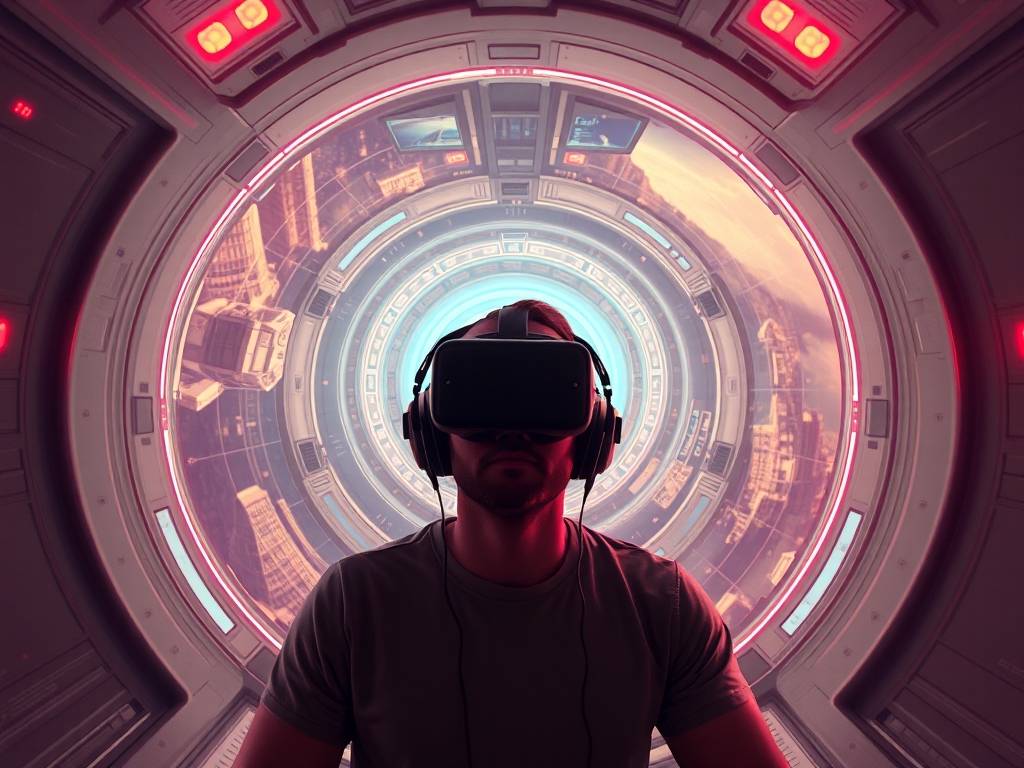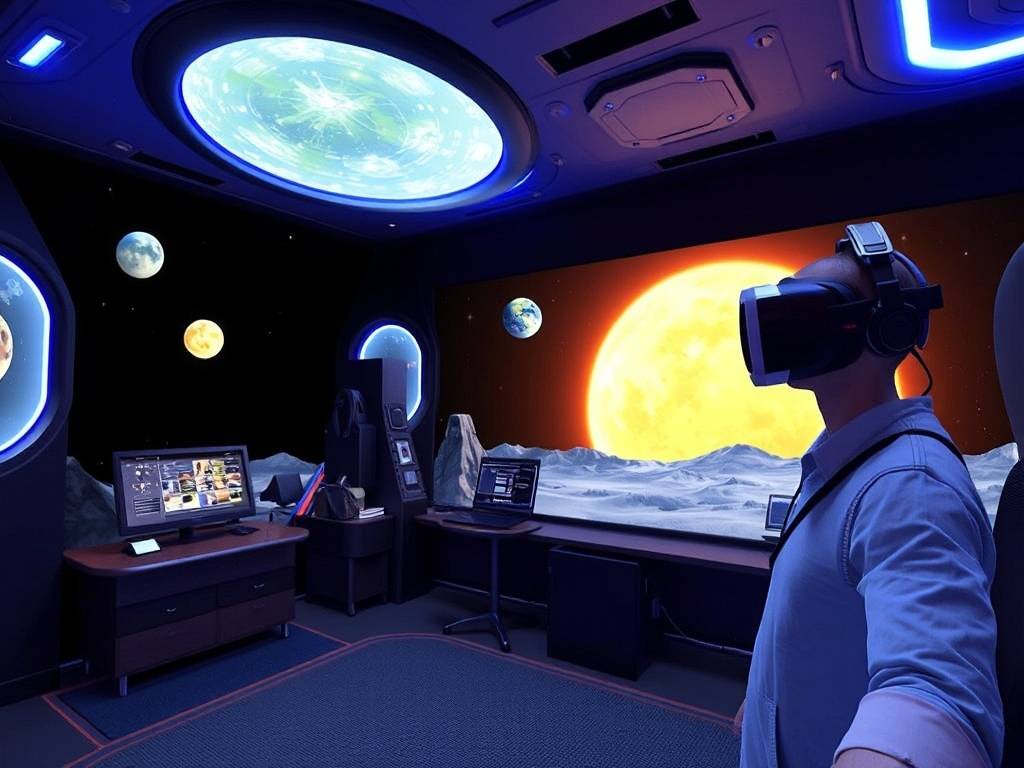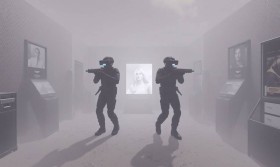Thought Simulator VR: Unpacking the Process Missions Expansion
The landscape of virtual reality has long been dominated by the external—the visual spectacle, the auditory immersion, the physical haptics. We strap on headsets to see new worlds and manipulate them with our hands. But what if the next frontier isn't outward, but inward? This is the paradigm-shifting proposition of Thought Simulator VR, a platform that has captured the imagination of users and psychologists alike by using non-invasive neuro-sensing to translate cognitive states into virtual interactions. Its initial release offered a tantalizing glimpse into this future, allowing users to practice focus, calm their virtual environment through meditation, and manipulate simple objects with mental command. However, its true evolution has arrived with the Process Missions Expansion, a content pack that fundamentally redefines the software from a novel tech demo into a profound tool for cognitive and emotional development.
The core genius of the Process Missions Expansion lies in its name. It moves beyond isolated "tasks" or "challenges" and introduces structured, multi-stage "processes." These are not about achieving a binary success or failure; they are about navigating a complex, internal journey. The expansion posits that true growth occurs not in the destination, but in the process of getting there. Each mission is a carefully crafted narrative arc for the mind, designed to train specific cognitive and emotional muscles over an extended, nuanced session.
A Deep Dive into Key Mission Archetypes
The expansion features several mission categories, each targeting a distinct aspect of our inner world.

1. The Architect's Dilemma: A Mission in Focused Flow This mission type addresses the modern plague of distraction. The user is placed in a minimalist environment, such as a blank space with floating, semi-transparent geometric blocks. The initial goal is simple: will a specific, complex structure into existence. But this is not a simple on/off command. The VR environment is directly tied to the user's EEG readings. A calm, focused brainwave state makes the blocks solid and easy to manipulate. The intrusion of a distracting thought—manifested as a stray neural pattern—causes the blocks to flicker, become unstable, or even drift away.
The "process" here is learning to recognize the onset of distraction and gently guiding the mind back without self-judgment. The mission isn't failed by a distraction; instead, the environment visually cues the user to acknowledge the lapse and re-engage. Over time, users report developing a meta-awareness of their focus, a skill that translates directly to improved productivity and deep work in their daily lives. The mission concludes not with a congratulatory fanfare, but with the serene satisfaction of having built something beautiful through sustained, intentional thought.
2. The Empath's Journey: Navigating Emotional Landscapes This is perhaps the most groundbreaking addition. Using heart rate variability and subtle facial muscle sensors (via the headset's built-in cameras), these missions map the user's emotional state onto a dynamic world. In one mission, "The Valley of Echoes," the user embodies a character walking through a landscape that reacts in real-time to their emotions. Frustration might cause the sky to darken and thorny vines to sprout. Anxiety could make the path narrow and the ground tremble. Curiosity, however, causes hidden flora to bloom, and calmness clears the fog, revealing new paths.
The mission's objective is not to suppress "negative" emotions but to understand and navigate through them. The user learns that acknowledging anxiety without being consumed by it gradually steadies the path. Cultivating a sense of wonder actively changes the environment for the better. This biofeedback loop is powerful; it provides a tangible, visual representation of internal emotional regulation, teaching users that they have agency over their emotional responses. It's a form of interactive therapy, training emotional intelligence in a safe, consequence-free space.
3. The Logic Weaver: Untangling Cognitive Knots Targeting executive functions like problem-solving and planning, these missions present users with intricate puzzles that cannot be solved through traditional inputs. Instead, solutions are woven from thought. A mission might involve a network of light streams representing a complex problem. The user must hold multiple variables in their mind simultaneously—a state associated with high-frequency gamma brainwaves—to see connections form between the streams. Letting go of a linear, step-by-step approach and embracing a more holistic, parallel processing mode is key to success.
This mission type trains the brain to break free from rigid thinking patterns. It encourages cognitive flexibility, forcing the user to shift perspectives and approach problems from different angles. The "aha!" moment of solution is accompanied by a brilliant, user-generated neural signature that illuminates the entire virtual space, providing a deep, intrinsic reward for successful cognitive effort.

The Technology Behind the Experience
The success of the Process Missions Expansion hinges on the refined calibration of Thought Simulator VR's proprietary algorithms. The system no longer looks for broad, simple signals but learns the unique "thought signatures" of each user over time. It distinguishes between focused intensity and frustrated straining, between serene calm and disengaged apathy. This personalization is crucial, as it ensures the feedback is accurate and meaningful, avoiding the frustration of a one-size-fits-all model.
The Broader Implications
The Process Missions Expansion moves Thought Simulator VR firmly into the realms of applied psychology and education. It has potential applications far beyond entertainment:
- Therapeutic Settings: Therapists can use specific missions to help clients practice anxiety management, emotional regulation, and mindfulness in a controlled, measurable way.
- Corporate Training: "The Architect's Dilemma" could be used to train employees in sustained focus and flow states, while team-based "Empath's Journey" missions could enhance workplace empathy and collaboration.
- Personal Development: For the general user, it becomes a gym for the mind—a place to consciously work on cognitive weaknesses and build mental resilience.
In conclusion, the Process Missions Expansion is not merely more content; it is a fundamental upgrade to the philosophy of Thought Simulator VR. It transforms the platform from a passive mirror reflecting our brainwaves into an active guide, leading us through the intricate and often uncharted territories of our own minds. By framing cognitive exercise as a narrative process, it makes the arduous work of self-improvement engaging, insightful, and profoundly impactful. It is a bold step toward a future where we don't just use technology to escape reality, but to better understand and master the reality of our own consciousness.
Tags: #ThoughtSimulatorVR #VirtualReality #Neurogaming #Biofeedback #MentalHealthTech #CognitiveTraining #EmotionalIntelligence #VRTherapy #FutureOfGaming #FocusTraining


















